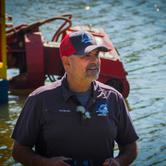How do We Turn Our HOA Pond into a Fishpond?
A local pond adds value and enhances the lives of its residents. It's aesthetically pleasing, acts as an emergency stormwater retention device, and increases the value of nearby homes. Residents often request the addition of game fish from their Homeowner association. Fulfilling this request is easier said than done. You can't run to the live fish store, buy some trout or bass, and throw them into the pond. Fish require a delicate balance of water parameters and temperatures to live happy and healthy lives. If you're considering turning your pond into a fishpond, here are five things to look out for.
Match Pond with Fish
For the best chances of success, you should match the fish you want with the parameters of the pond. For example, trout prefer colder, oxygen-enriched water (54 degrees) with a gravel or rocky bottom. If your pond resides in an area that experiences constant high temperatures, the trout probably will not survive. Bass and sunfish (crappie, panfish) do best in warmer ponds. Water above 70 degrees causes bass to become highly aggressive, which makes for some exciting fishing. Bass tend to require bigger ponds where they can retreat into the depths if they don't feel like hanging out in the warmer water.
Water Parameters
Once stocked, you should monitor the water parameters weekly for up to a year. Fish can die quickly if the nitrite or nitrate levels are too high. Both natural and man-made processes cause this. If your pond doesn't have the natural means to process the fish waste, nitrite and nitrate levels can rise dangerously high. You can buy an inexpensive test kit at your local garden supply shop or on Amazon. Take one of the test tubes and scoop out some pond water, then dip the included paper strip inside. In minutes, a color-coded chart will tell you if your water parameters are safe for the fish.
Stocking Considerations
The size of your pond determines the quantity of fish (and what kinds) you can stock. If you have too many fish, their combined oxygen requirements and waste production will eventually lead to a massive die-off. The general rule of thumb, if you don't plan on feeding the fish, is 100 bass, 500 bluegills, and 100 channel catfish for a one-acre pond. If you do plan on feeding them, the numbers can double. You'll also need to consider fishing pressure. How many fish will anglers remove in a given month? Is the fish population self-sustaining? A knowledgeable fishery in your area can help you determine the answers to the above questions.
Predatory vs. Non-Predatory Fish
Many species of fish are predatory. Bass species can quickly decimate the trout population if there aren't other fish to prey upon. Many HOA pond managers will include abundant bluegill to fatten the food chain. Bluegill is the backbone of any cold or warm water pond. Their juveniles also won't compete with bass or trout for food. Threadfin shad is another popular prey species that will help sustain the predatory fish throughout the year.
Aeration
Much like human beings, fish need oxygen to survive. The oxygen supply requires the water of the pond to be agitated somehow. Many HOA pond managers will install an aeration system that works year-round to help keep the fish alive and well. Solar fountain pumps are especially popular because they don't require an electrical hookup. Simply install the pump and place the solar panel in a safe area that receives daily direct sunlight. They tend to work best in small to medium-sized ponds, as they won't produce as much oxygen as one that's connected to a direct power source.
Pond Dredging
If you're considering converting your pond into a fish pond, a great place to start is to have it dredged. Most ponds contain hundreds or even thousands of pounds of rotting organic material at the bottom, which can be detrimental to fish's health and well-being. At American Underwater Services, we specialize in dredging ponds. We can travel anywhere in the US to help you create the perfect pond. Call us today at (817) 377-8512 to learn more about our pond dredging services. [author_box]




